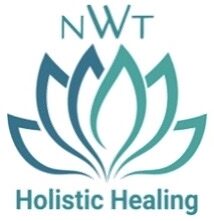Do-In can be described as a form of self-shiatsu. To understand the benefits of Do-In, we must first understand Ki and its purpose in the body.
There is a lifeforce which animates us. This lifeforce in traditional chinese medicine (TCM) is called chi (or ‘qi’, or ‘ki’ in Japan, ‘prana’ in India), it is the vital energy that every bodily system, organ, tissue, or cell needs in order to function.

Let’s consider the UK road network: the motorways are the major roads carrying larger volumes of traffic, and we then have the A and B roads, which altogether form our road network. All roads have specific purposes and functions depending on your destination, the speed at which you wish to travel, and the places you wish to pass along the way. These roads all intersect at some point, and these intersections can impact the flow of traffic on several roads. When we experience a roadblock, this can adversely affect our journey.
According to TCM, just like the road systems, our bodies have a complex network of pathways through which energy flows, ensuring health, emotional stability, and balance. These pathways intersect, and the intersections can be viewed as the acupuncture points, of which there are hundreds throughout the body. These acupuncture points can affect the movement of ki along the intersecting pathways, just like an incident at a roundabout or a junction might affect road traffic. These pathways and intersections (points) were documented in meticulous detail over two thousand years ago by Chinese anatomists. There are 12 primary pathways, which are commonly referred to as the meridians, but there are many more meridians in addition to these 12. However, for the purposes of Do-In we will stick to the 12 principal meridians.

Fundamental to Shiatsu is the idea that illness and syndromes are understood as the blockage or stagnation of ki, or vital energy, to a biological system, tissue, organ, or cell. Health is therefore perceived as clear roads (pathways) where ki can flow without obstruction or stagnation.
Do-In helps to enable the free flow of ki along these pathways. “’Do’ of Do-In means to open up channels and facilitate the movement of energy along specific routes. ‘In’ of Do-In means to move and stretch one’s limbs to achieve this purpose.” Shizuto Masanaga [Meridian Exercises: The Oriental Way to Health and Vitality].
Do-In places emphasis on the breath and mind. As any student of zen shiatsu is told, ‘The mind leads the ki”, therefore, strategic breaths and visualisations are required during the practice of Do-In. Incorporating self-acupressure, self-massage, and stretches, Do-In exercises are typically separated into two categories: Yang exercises, which include standing and moving postures, and Yin exercises, which include lying down and sitting.
The beauty of Do-In is that it is a self-practice, which is why it can be described as a form of self-shiatsu. It is written in classical texts that Do-In is a practice that enables a person to stay young, healthy, and strong.
Do-In should be done under the guidance of a qualified instructor.
In honour of Shiatsu Awareness Month in June NWT Holistic Healing will run Do-In workshops so look out of the dates on the Upcoming Events page: https://nwt-holistichealing.co.uk/index.php/upcoming-events/
.
.
.
